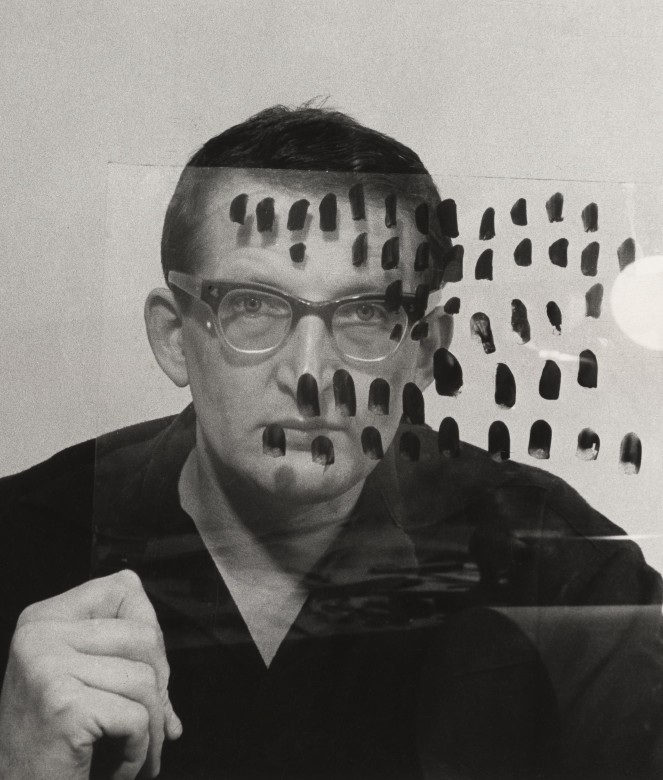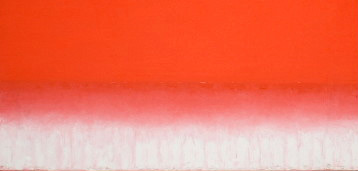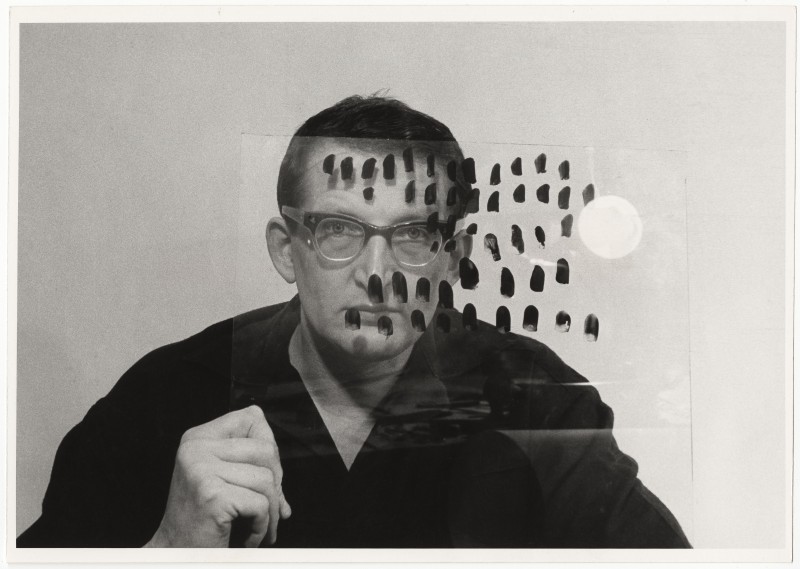Wojciech Zamecznik — Photographic contexts
International conference
Zachęta | cinema room (entrance from Burschego street)
free entry
The conference will be in Polish and English, with simultaneous translation into both languages
The exhibition Wojciech Zamecznik. Photo-graphics presents the works of this artist through the optic of the special relation they evoke between graphic design and photography. Although Wojciech Zamecznik was not a professional photographer, the numerous photographs that he took convey a strong sense of the spirit of their times; in them can also be seen inspirations from particular currents in post-war photography. The conference accompanying the Wojciech Zamecznik exhibition aims to evoke the broad international context to the work of this Polish artist.On the one hand, this was created by subjective photography, animated in Europe by Otto Steinert, and on the other – by documentary photography under the sign of Edward Steichen’s exhibition The Family of Man, and also László Moholy-Nagy’s experiments with light. Through the presentations of outstanding experts in these fields and the participation of Polish specialists on the post-war period, the conference aims to act as a place of the confluence of several themes explored in parallel, thus enabling a deepened understanding of the significance of Zamecznik’s work. Against this backdrop will also be presented the history of work on the artist’s archive, the Zamecznik individual exhibition in Zachęta and the project for an exhibition in the Musée de l'Elysée in Lausanne.
CONFERENCE PROGRAM
- 10 a.m. Introduction: Hanna Wróblewska (Zachęta — National Gallery of Art) and Karolina Ziębińska-Lewandowska (Musée national d’art moderne, Centre Pompidou, Paris)
- 10.15–10.45 a.m. Piotr Rypson (National Museum in Warsaw)
Berman: from Opposition Photo-editor to Editor of Power - 10.45–11.15 a.m. Kamila Leśniak (Lublin Museum)
The Family of Man in Poland. Humanist Photography Between Avant-garde and Propaganda - 11.15–11.45 a.m. Matthew S. Witkovsky (Art Institute of Chicago)
Elemental Marks: On Writing as a Medium for László Moholy-Nagy - 11.45 a.m.–12.15 p.m. Florian Ebner (Museum Folkwang, Essen)
“Absolute photographic creation” in Post-war German Photography. From Widespread Propaganda and Lasting Experiments - 12.15 p.m. Discussion
- 1–2.30 p.m. Break
- 2.30–3 p.m. Karolina Ziębińska-Lewandowska (Musée national d’art moderne, Centre Pompidou, Paris)
Wojciech Zamecznik Seen Through His Archive - 3–3.30 p.m.Anne Lacoste (Musée de l’Elysée, Lausanne)
Wojciech Zamecznik: Approaching Photography with No Boundary - 3.30 p.m. Discussion
Abstracts
Kamila Leśniak (Lublin Museum)
The Family of Man in Poland. Humanist Photography Between Avant-garde and Propaganda
The Family of Man, an exhibition created by Edward Steichen in 1955, is currently considered not so much an important phenomenon in the history of world photography as a point of departure for the discussion on social, economic and ideological tensions of the Cold War period. Some texts which were critical of this project entered the canon of writings dedicated to photography as a medium, its significance and position in culture. In 1950s and 1960s the exhibition was shown in various countries under the auspices of the United States Information Agency. An insight into its reception in those places reveals often unexpected artistic and political configurations, not necessarily convergent with the dominant narratives. How was The Family of Man received in Warsaw in 1959? Did its equality message, expressed in the slogan ‘we are all alike’, convince Polish viewers? And finally, how did it influence the reflection on photography as a medium and photography and exhibition practices?
Matthew S. Witkovsky (Art Institute of Chicago)
Elemental Marks: On Writing as a Medium for László Moholy-Nagy
László Moholy-Nagy (American, born in Hungary, 1895–1946) was likely the most prolific writer of any artist who has ever lived. He authored (and substantially revised) three full books, co-wrote several more, and lectured or published an essay approximately every 4–6 weeks between 1922 and his death. Best known as a multimedia artist, Moholy-Nagy may be said to have made writing his primary medium. His attention to writing was, however, neither stable nor consistent. It served as an elemental, life-giving substance, like the light that he treasured and extolled — but these elemental marks meant different things to Moholy-Nagy at different times. He embraced various notational systems, among them photography or ‘light-writing’, in the early 1920s; turned to administration and publishing (from letters to letterhead) in the later 1920s; and in the 1930s and 1940s explored varieties of ‘controlled scribbling’ that blanketed the surfaces of his art works and countered the legibility he claimed, in writing, to prize.
Florian Ebner (Museum Folkwang, Essen)
‘Absolute Photographic Creation’ in Post-war German Photography. From Widespread Propaganda and Lasting Experiments
In 1955, Otto Steinert, photographer and influential initiator of Subjektive Fotografie, published his seminal text On the Creative Possibilities of Photography, one of the manifestos of this movement and matter of violent debates on the theoretical field of post-war photography in Germany at that time. Steinert proposed four ‘stages of perfection’, with the ‘absolute photographic creation’, including photograms and light drawings, as its purest form.
The lecture seeks to match this theory to Steinert’s own photographic praxis and to contextualise its underlying ideas. It focuses on the rhetorics and paradoxes of the debate. Finally it proposes with Peter Keetman and Kilian Breier the work of two photographers that in a certain way pursued the radical idea of an ‘absolute photographic creation’, building a bridge to the artistic production by Wojciech Zamecznik.
Karolina Ziębińska-Lewandowska (Musée national d’art moderne, Centre Pompidou, Paris)
Wojciech Zamecznik Seen Through His Archive
If Wojciech Zamecznik can be perceived as a versatile designer today, it is mainly because of his vast archive, carefully preserved by his son Juliusz Zamecznik. Apart from posters, which belong to the group of relatively well-known works of Zamecznik, most of his realisations were ephemeral. In his heirloom, the documentation of his work is mixed with documents related to his private life; in 2011 it was entrusted to the Archeology of Photography Foundation and gradually transformed in an archive. An insight into chosen works and discoveries will provide a broader perspective for the exhibition presented in Zachęta.
Anne Lacoste (Musée de l’Elysée, Lausanne)
Wojciech Zamecznik: Approaching Photography with No Boundary
Wojciech Zamecznik mentioned his wish to become a professional photographer. If he is famous for his innovative approach of treating photography as a material for his graphic design work, resulting in constant experiments with the medium, his use of a photographic camera to record his immediate environment is less known. The lecture proposes to focus on the several hundreds of ‘traditional’ photographs he produced during his lifetime — intimate life, travels in foreign countries as well as commissions — and to study this body of work in the context of his career.
Speakers
Piotr Rypson, PhD in literary studies, since 2012 Deputy Director for Research at the National Museum in Warsaw. Guest lecturer at various universities and colleges in Europe and USA — among others Rhode Island School of Design, Providence. Between 1990–2009 curator of numerous exhibitions of contemporary art, design history, artists’ books and visual literature, etc. Author of seven books and over 200 articles on art, information architecture, visual communication and literature. Among his recent books are: Against All Odds. Polish Graphic Design 1919–1949 (2011) and Kilométrage. Jan Brzękowski und seine Künstlerwelten (2011). His last exhibition was about Tadeusz Peiper and avant-garde international circles (2015). He is currently preparing a book on the history of Polish graphic design after 1945.
Kamila Leśniak has a PhD in Art History and is an author and editor of critical texts. She specialises in the history of photography and photography criticism, and also in a range of areas of Polish contemporary art. She is a winner of the Prof. Szczęsny Dettloff Award (2014) for her doctoral work devoted to the reception of the exhibition The Family of Man in Poland.
Matthew S. Witkovsky is Sandor Chair of Photography at the Art Institute of Chicago, where the retrospective exhibition on László Moholy-Nagy that he has helped to curate will open in October. Active in art museums and galleries since the 1980s, he has curated more than 20 exhibitions, and authored ten books and four dozen articles for journals including October, Artforum, and The Art Bulletin. Exhibition catalogues include Foto: Modernity in Central Europe, 1918–1945 (2007), Light Years: Conceptual Art and the Photograph, 1964–1977 (2011), Christopher Williams: The Production Line of Happiness (2014), and Sarah Charlesworth: Stills (2014).
Florian Ebner, since 2012 head of the photographic collection at the Museum Folkwang, Essen. In 2015, he was curator of the German Pavilion at the 56th Venice Biennial. From 2009 to 2012, he was director of the Museum für Photographie Braunschweig, and in 2008–2009 he was in charge of the Photographic Collection at the Berlinische Galerie Museum of Modern Art. Prior to that, he taught photography at the Academy of Visual Arts in Leipzig. Among his exhibitions and publications are: Cairo. Open City New Testimonies from an Ongoing Revolution (2013), Rhetorik der Bilder (2011), (Mis)Understanding Photography. Works and Manifestos (2014).
Karolina Ziębińska-Lewandowska is PhD in art historian specialised in history of photography. Since 2014 curator at the photography department of Musée national d’Art moderne, Centre Pompidou in Paris. Co-founder and head (2008–2014) of the Archeology of Photography Foundation. From 1999 to 2010 she worked as a curator at the Zachęta — National Gallery of Art. Among her exhibitions and publications are: Between Documentary and Experiment. Photography in Polish Photomagazines 1946–1989 (2014); She-Documentalists. Polish Women Photographers of the 20th Century (2008); Allan Sekula — Polonia and Other Fables (2010); Zbigniew Dłubak. Body Structures (2013); Unbearable Lightness. 1980s, Photography, Film (2016).
Anne Lacoste, PhD in art history, since 2011 curator at the Musée de l’Elysée in Lausanne. From 2004 to 2011 curator at the Photography Department in J.Paul Getty Museum, Los Angeles. Her exhibition and publication projects cover the history of photography including monographies on Felice Beato, Irving Penn, Luc Delahaye and Philippe Halsman as well as group exhibitions such as reGeneration 3: Which Approaches to Photography?. It also includes studies related to the history and specificities of the medium such as the aesthetics of the Photobooth, the practice of photography in archaeology, private collections, portraiture and photographic archives. She is currently working on a project devoted to the history of the projection of photography (2017), Jean Dubuffet’s practices of photography (2017), and Martine Franck’s monography (2018).
-
 30.01 – 24.04.2016Wojciech ZamecznikPhoto-graphics
30.01 – 24.04.2016Wojciech ZamecznikPhoto-graphicsWojciech Zamecznik (1923–1967) — one of the most important representatives of the Polish Poster School is a multi-dimensional but still little known figure. Currently in the process of being rediscovered as a photographer, he was active through the two decades following the Second World War as an artist in a wide number of fields.
Zachęta – National Gallery of ArtZachęta





